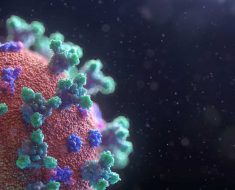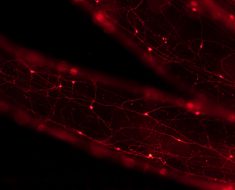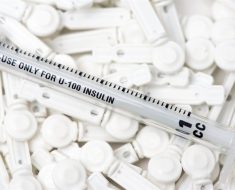High cholesterol: Nutritionist reveals top prevention tips
We use your sign-up to provide content in ways you’ve consented to and to improve our understanding of you. This may include adverts from us and 3rd parties based on our understanding. You can unsubscribe at any time. More info
High cholesterol means you have too much cholesterol in your blood. Cholesterol is not bad in of itself – among other things, it helps your metabolism work efficiently. However, too much cholesterol can cause your arteries to narrow, thereby cutting off vital blood supply to vital organs. When this process happens in your legs, it is called peripheral arterial disease (PAD).
PAD is a condition where the arteries to your legs become narrowed, thereby restricting the flow of blood to them.
If you have severe peripheral arterial disease, the skin on your legs and feet may become pale and cool, “especially when your feet are put up”, explains Bupa.
Other signs include:
- Pain in your foot or calf at rest or at night
- Weakened muscles in your legs
- Sores or wounds on your toes, feet or legs that won’t heal
- Hair loss from your toes, feet or legs.
“If you have any of these symptoms, contact your GP. If your symptoms develop or change quickly, you may need immediate medical treatment,” advises Bupa.

How to minimise the risk
The best way to ward off the threat of PAD and other high cholesterol-complications is to first get tested.
You can only find out if you have high cholesterol from a blood test.
“Your GP might suggest having a test if they think your cholesterol level could be high,” explains the NHS.
“This may be because of your age, weight or another condition you have (like high blood pressure or diabetes).”
DON’T MISS
High cholesterol: Doctor ‘names and shames’ worst foods [TIPS]
Do you have coronavirus? The top symptom in fully vaccinated [INSIGHT]
The two-minute exercise to lower blood pressure [ADVICE]
How to lower high cholesterol
If you’re diagnosed with high cholesterol, you’ll usually be advised to make lifestyle changes to lower high levels.
Different foods lower cholesterol in various ways.
“Some deliver soluble fibre, which binds cholesterol and its precursors in the digestive system and drags them out of the body before they get into circulation,” explains Harvard Health.
Oats, barley and other whole grains are all good sources of soluble fibre.

You should also shun saturated fats where possible to lower high cholesterol levels.
Many foods contain saturated fat, especially animal foods such as meat, butter and dairy products, and foods that are made with them, such as cakes and biscuits.
They’re also found in some plant foods including coconut oil and palm oil.
“Cutting down on foods high in saturated fat and replacing them with foods higher in unsaturated fat can help improve cholesterol levels,” explains cholesterol charity Heart UK.

For example, plant-based fat spreads and oils, oily fish, nuts and seeds.
According to UK dietary guidelines, about a third of our energy should come from fat. That’s about 70g for a woman and 90g for a man per day.
Saturated fats should make up no more than a third of this. That’s 20g for women and 30g for men.
“When you’re shopping, check the labels of products to see how much fat they contain and how much they will add to the daily maximum,” advises Heart UK.
Source: Read Full Article





